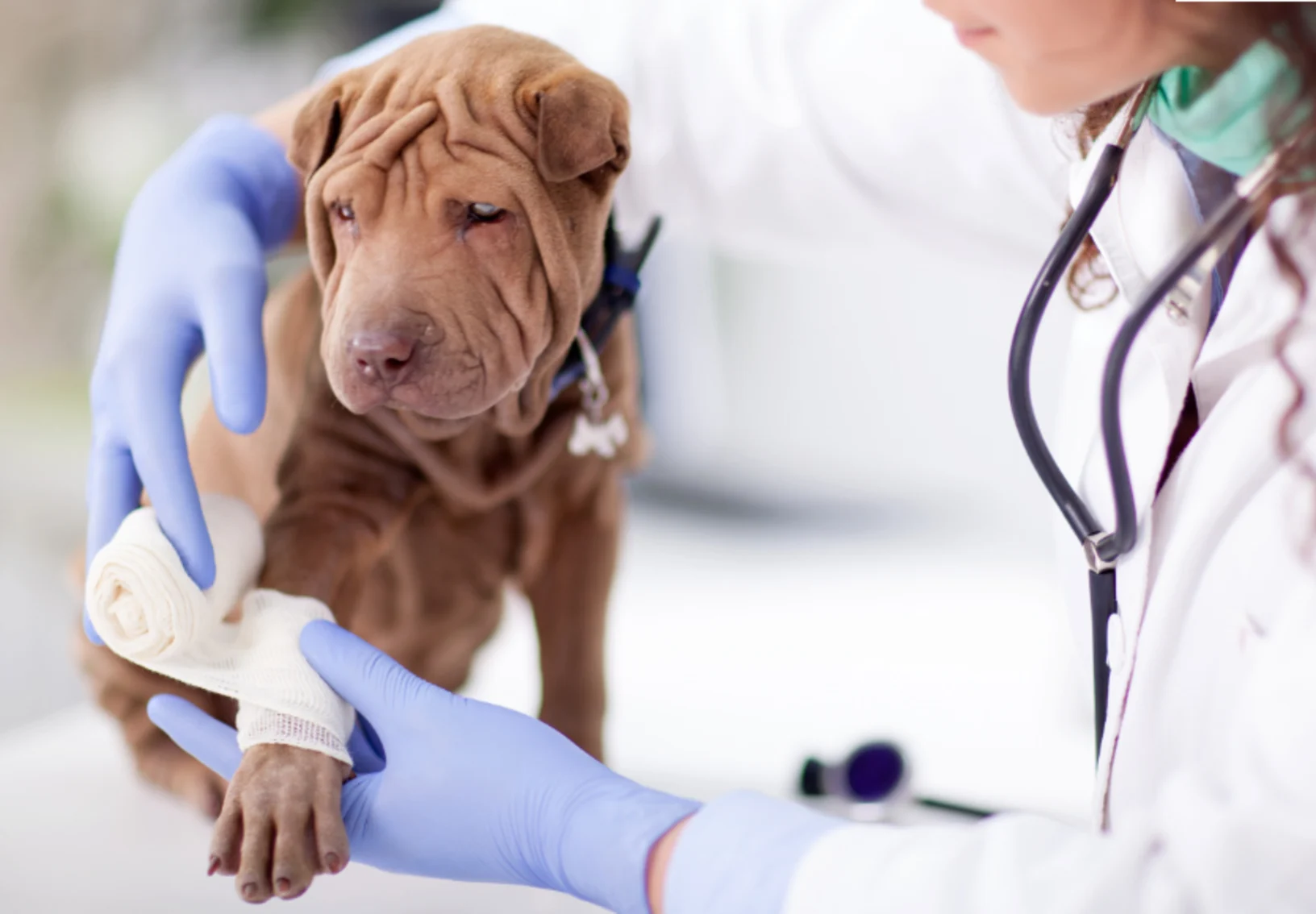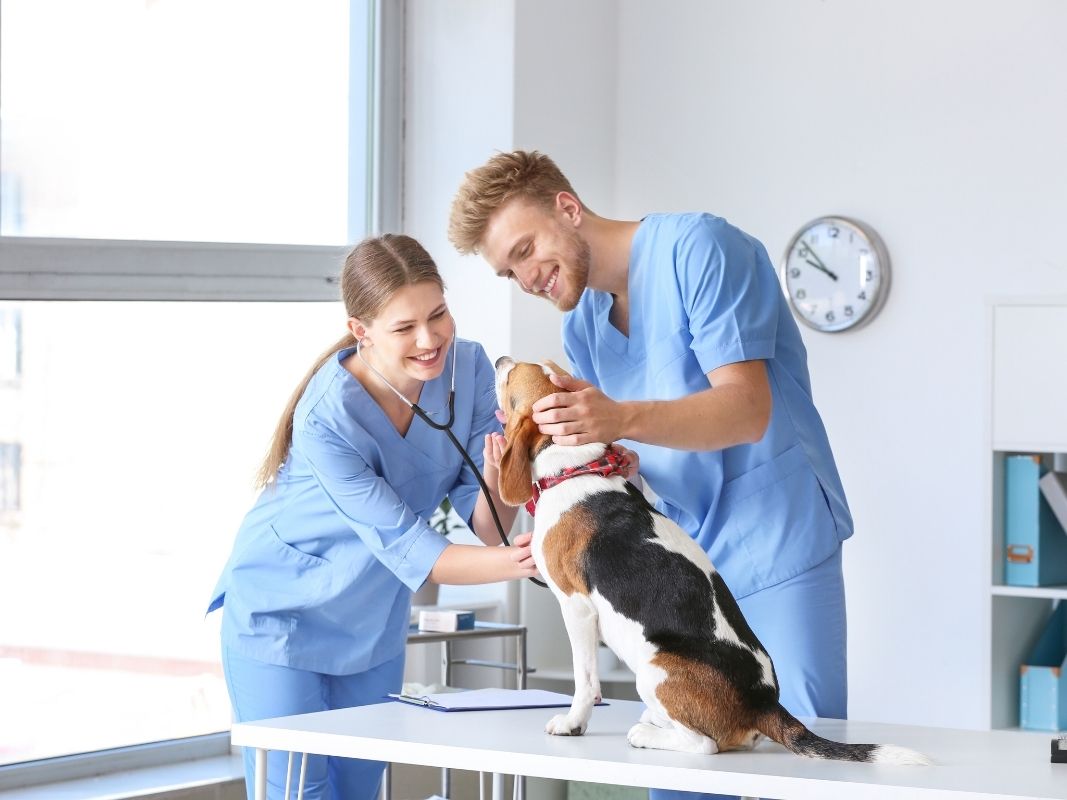Top Mistakes to Avoid Before, During, and After tplo surgery
Wiki Article
Why Animal Rehabilitation Is Critical: the Perks of Vet Solutions for Your Animal's Healing
Pet rehab is a vital element of healing for animals facing injuries or disabilities. Vet services provide crucial support with tailored recovery strategies that deal with individual needs. These strategies commonly consist of pain monitoring, physical treatment, and nutritional advice. Comprehending the various elements of animal rehabilitation can brighten its significance in enhancing recovery outcomes. What certain benefits do these solutions provide, and exactly how can they change a pet dog's recovery trip?Recognizing Animal Rehab
Pet rehab encompasses a series of healing methods aimed at restoring the health and wellness and functionality of damaged or handicapped animals. This field integrates various techniques, including physical therapy, hydrotherapy, and occupational therapy, tailored to satisfy the certain needs of each animal. Rehab experts examine an animal's condition, creating individualized treatment plans that may include exercises to enhance muscles, boost flexibility, and enhance total well-being. The procedure not only concentrates on physical recovery but additionally addresses psychological and behavior facets. Pets typically experience anxiety and anxiety complying with an injury, making mental health and wellness factors to consider important in recovery. By developing a supportive environment, therapists can help animals reclaim their self-confidence and adapt to their brand-new situations. Through regular sessions, animals can experience considerable enhancements, eventually causing a far better high quality of life. In general, recognizing pet rehabilitation highlights its importance in promoting recovery and enhancing the bond between family pets and their proprietors.
The Duty of Discomfort Management in Healing
How necessary is efficient discomfort management in the healing of damaged animals? It plays an important duty in promoting recovery and enhancing the overall health of pet dogs. Correct discomfort administration not just alleviates pain yet likewise advertises flexibility, enabling pets to take part in recovery tasks required for recuperation. When discomfort is successfully handled, animals have a tendency to react favorably to treatment, leading to quicker rehabilitation outcomes.Veterinarians make use of different techniques to evaluate and address discomfort, consisting of drugs, acupuncture, and alternative treatments. By tailoring discomfort monitoring techniques to the specific requirements of each pet, vets can assure that pets remain calm and cooperative throughout their recovery journey. Minimizing discomfort helps decrease anxiety, which can hinder healing and prolong recovery times. To summarize, efficient pain administration is vital for improving the healing process and boosting the lifestyle for hurt pets.Physical Treatment Methods for Family Pets
Numerous physical treatment strategies are readily available to assist in the rehab of pet dogs recuperating from injuries or surgical procedures (canine tplo surgery). These methods can improve flexibility, relieve pain, and advertise healing. Healing workouts, as an example, assistance reinforce muscle mass and boost joint function, allowing pets to restore their physical capacities gradually. Hands-on therapy, that includes massage therapy and mobilization, can ease tension and improve blood circulation, adding to a much faster recovery.Other methods such as easy range of movement workouts urge joint flexibility and lower tightness. Additionally, electrical stimulation treatment might be employed to boost nerves and muscles, promoting recovery and pain relief.Veterinary professionals commonly tailor these methods to every pet dog's details demands, making sure a thorough rehabilitation plan. By applying these physical treatment methods, pet dogs can experience improved lifestyle and a much more successful healing from their ailments. The combination of these methods into rehab programs is necessary for excellent healing end resultsAdvantages of Hydrotherapy for Rehab
Hydrotherapy offers considerable advantages in pet recovery, specifically in improving movement. This water-based treatment advertises discomfort alleviation while offering convenience to injured or recuperating pets. Additionally, it facilitates strength-building exercises that add to total physical recovery.Boosted Mobility Improvement
As animals recover from injuries or surgical treatments, improved mobility often comes to be a main objective of their rehab. Hydrotherapy acts as a beneficial tool in achieving this objective. Through water-based workouts, pets can participate in low-impact movements that assist in joint mobility and reinforce muscular tissues without the stress of weight-bearing activities. The buoyancy of water sustains their bodies, permitting enhanced variety of motion and flexibility renovation. Additionally, hydrotherapy motivates much better balance and coordination, which are important for bring back typical motion patterns. Normal sessions can lead to significant progress in a pet's physical abilities, inevitably boosting their lifestyle. This technique not just help in recuperation however additionally advertises an extra active and satisfying way of living post-rehabilitation.Pain Relief and Convenience

Alleviation from discomfort is a vital element of animal rehab, and hydrotherapy substantially contributes to this process. By using water's buoyancy, hydrotherapy reduces joint stress and minimizes discomfort throughout motion. This restorative technique offers a comforting atmosphere where pet dogs can involve in gentle exercises without the complete weight of their bodies impacting their recovery. The cozy water boosts blood circulation, advertising healing while likewise urging leisure. Additionally, hydrotherapy sessions can be customized to satisfy the details demands of the animal, making sure perfect convenience. As family pets experience lowered pain and raised comfort degrees, their overall desire to take part in rehabilitation tasks typically boosts, bring about a much more effective healing journey. Subsequently, hydrotherapy works as a critical tool in enhancing discomfort alleviation and convenience during rehab.
Strength Structure Exercises
Strength-building exercises play a necessary role in the rehabilitation procedure, with hydrotherapy offering distinct advantages. This form of therapy uses water resistance to improve muscle toughness without putting excessive stress on the joints. The buoyancy of water sustains the pet's weight, enabling more secure activity and raised range of movement. In addition, hydrotherapy can improve cardio health and wellness and advertise overall health and fitness, assisting in quicker recuperation from injuries or surgeries. The controlled atmosphere likewise lessens the threat of reinjury, making it an optimal option for family pets calling for recovery. Regular hydrotherapy sessions can bring about noticeable renovations in wheelchair, strength, and endurance, eventually boosting the family pet's lifestyle and ability to go back to normal activities.Value of Custom-made Rehabilitation Plans
Customized rehabilitation plans are important for addressing the distinct requirements of each animal, ensuring individualized treatment methods. These strategies enable effective progress monitoring and essential changes, promoting excellent recuperation end results. Furthermore, an all natural strategy can improve the overall well-being of the pet, promoting an extra detailed rehab experience.Individualized Treatment Approaches
While numerous rehab programs adopt a one-size-fits-all strategy, the one-of-a-kind requirements of each animal necessitate individualized therapy prepare for excellent healing. Personalized rehabilitation strategies take into consideration numerous factors, consisting of the animal's varieties, age, clinical history, and specific injuries or conditions. By customizing treatments, veterinarians can deal with each pet's distinct challenges, making best use of the efficiency of the rehabilitation process. Individualized strategies might incorporate different modalities such as physical treatment, hydrotherapy, and restorative workouts, ensuring that the treatment lines up with the pet's capabilities and progress. Furthermore, customized approaches foster a stronger bond in between the pet and the caretaker, promoting an extra engaging and encouraging recuperation environment. Ultimately, customized treatment is essential for attaining finest possible outcomes in pet rehabilitation.Progress Monitoring and Adjustments

Holistic Healing Techniques
Alternative recuperation approaches are important for effective animal rehab, as they highlight the importance of personalized therapy plans customized per animal's specific needs. This strategy considers the physical, psychological, and environmental factors impacting recovery. Personalized rehabilitation strategies might consist of a combination of physical treatment, nutritional therapy, and behavioral alterations. By attending to these diverse elements, veterinarians can boost the overall wellness of the pet and promote a much faster healing. Furthermore, such customized techniques facilitate a much deeper understanding of the pet dog's distinct challenges, resulting in much more efficient treatments. Eventually, holistic recuperation approaches not only improve physical health but also add to the pet's psychological and emotional security, guaranteeing a complete rehab experience.The Influence of Nutrition on Healing
Nourishment plays a necessary duty in the healing procedure for fixing up animals, often establishing the rate and efficiency of healing. A well-balanced diet plan supplies the essential nutrients that sustain cells repair service, boost the immune system, and improve general vitality. Protein is particularly essential, as it assists in muscular tissue restoring and recuperation from injuries. Essential fats, vitamins, and minerals also add to decreasing swelling and promoting optimum mobile function.Veterinarians often stress the relevance of customized nourishment strategies, considering each animal's specific needs, age, and health condition. Appropriate hydration is similarly essential, as liquids help with nutrition absorption and help in detoxification. By making sure that family pets obtain ideal nourishment, caretakers can substantially improve their chances of an effective healing, leading to far better long-term health and wellness end results. Ultimately, nutrition offers as a fundamental component in the rehab journey, sustaining pets in reclaiming toughness and strength post-injury or illness.Success Stories: Family Pets That Prospered After Rehabilitation
Effective rehabilitation stories abound, showcasing the durability of animals who have actually gotten rid of considerable challenges. Take, as an example, Bella, a golden retriever that endured severe injuries from an auto accident. With committed vet care and a complete recovery program, she restored her flexibility and returned to her lively self, much to her owner's delight. Max, a senior pet cat detected with joint inflammation, experienced remarkable enhancement with a combination of physical therapy and discomfort management. His newly found agility enabled him to enjoy his preferred sunbathing places again. An additional inspiring instance is that of Coco, a saved greyhound who conquered anxiety with therapy and socializing methods, enabling her to grow in her brand-new home. These success tales exemplify the transformative power of pet rehab, highlighting that with the best support, pets can not only recuperate but lead satisfying lives, enhancing the bonds they show to their family members.Frequently Asked Concerns
The length of time Does the Rehabilitation Refine Usually Consider Pet Dogs?
The rehabilitation process for animals normally varies based upon the injury or problem, ranging from a few weeks to a number of months. Private progression, therapy type, and dedication to exercises significantly influence the total duration of recovery.Exist Any Dangers Linked With Pet Rehab?
Animal rehabilitation might carry risks such as worsening of injuries, incorrect techniques resulting in discomfort, or inadequate tracking throughout healing. These factors can prevent development and affect the overall effectiveness of the recovery process.
Can All Pets Gain From Recovery Solutions?
Not all animals might need recovery, yet lots of can profit greatly. Rehab solutions can boost movement, alleviate discomfort, and enhance total well-being, especially for those recuperating from injuries, surgical procedures, or persistent conditions.How Can I Prepare My Family Pet for Rehabilitation Procedure?

What Indications Show My Animal Needs Rehabilitation?
Indicators showing a pet dog might need rehab include difficulty walking, limping, reduced activity levels, hesitation to jump, or indicators of discomfort. Observing these actions can prompt owners to seek specialist examination and treatment for their family pets.Report this wiki page